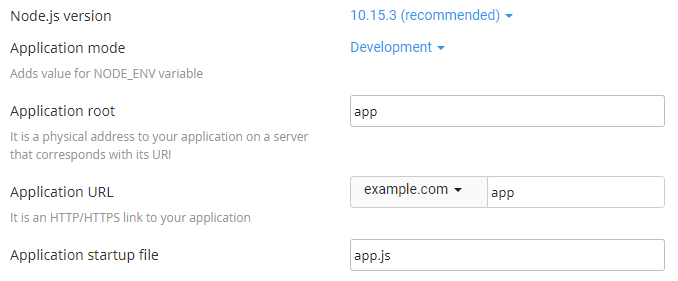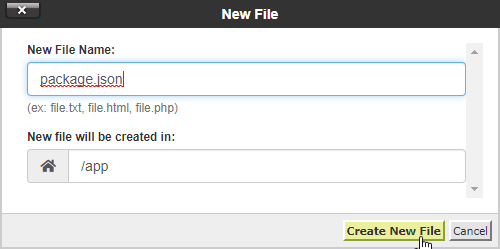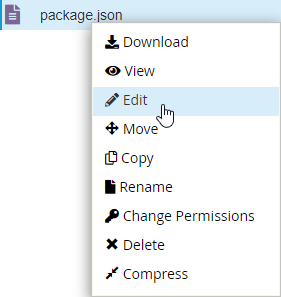The Node.js selector allows you to easily set up Node.js applications with the cPanel graphical interface or using the command line. Use whichever method you prefer.
Throughout this tutorial these variables are used:
- app is used for the application root directory and application uri.
- example is used for the username.
- example.com is used for the domain.
- app.js is used for the application startup file.
- My app is used as the description.
- 10 or 12 is the node.js major version number.
You should change these values to match the values required for your account and application
Method #1: Setting up a Node.js application with the cPanel interface
To set up a Node.js application using cPanel, use the following procedures.
Step #1: Create the application
First, you must create an application. To do this, follow these steps:
- Log in to cPanel.
If you do not know how to log in to your cPanel account, please see this article.
- In the SOFTWARE section of the cPanel home screen, click Setup Node.js App:

-
On the Node.js selector page, click CREATE APPLICATION to start the application setup:

-
Fill in the fields on the application setup form:

-
When the form is complete, click CREATE:

-
The application starts automatically. To view a test page for the application, click OPEN:

You should see the It Works! message appear.
Now that a working application is installed, you can enhance the environment with the package.json settings file and the npm package manager. To do this, follow the next two procedures.
Step #2: Create the package.json file
To create the package.json file, follow these steps:
- In the FILES section of cPanel, click the File Manager icon to open the File Manager:

-
In the left hand column of File Manager, click the text of the application root folder:

-
Click +File to create a new file:

-
In the New Filedialog box, type the filename package.json, and then click Create New File:

-
Right-click or secondary click on the package.json file in the right-hand column of File Manager and then click . An edit dialog box appears:

- In the Edit dialog box, click OK.
-
Type the following text in the editor screen:
{
"name": "app",
"version": "1.0.0",
"description": "My App",
"main": "app.js",
"scripts": {
"test": "echo \"Error: no test specified\" && exit 1"
},
"author": "",
"license": "ISC"
}
-
Click Save Changes to save the file:

-
Click Close to close the editor:

Step #3: Install npm
To install npm, follow these steps:
- In the SOFTWARE section of the cPanel home screen, click Setup Node.js App:

-
In the Actions column of the Web Applications list, click the pencil icon to edit the application:

-
Click Run NPM Install:

-
The NPM installation runs and displays a success indicator when complete:

-
To install packages with NPM and do other command line tasks related to the application, log in via SSH and enter the virtual environment for the application using the command shown in the information box at the top of the application setup page:

NOTE: We only provide Jailed SSH on temporary basis upon request
| 













